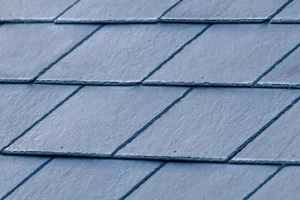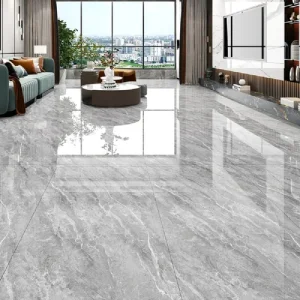
City life is a beautiful chaos. Sirens wail, neighbors live their lives just a wall away, and the hum of traffic is a constant companion. It’s energizing, sure. But it can also be… a lot. Your mind craves a quiet corner, a place to just be. The good news? You don’t need a sprawling country estate to find it.
You can carve out a slice of serenity right in your apartment. A dedicated mindfulness and meditation space isn’t a luxury; honestly, in our hyper-connected world, it’s becoming a necessity for mental well-being. It’s your personal retreat, a signal to your brain that here, in this little nook, the noise stops.
Why Your Home Needs a “Mindfulness Zone”
Think of it like this: you have a place to sleep, a place to eat, a place to work. So why not a place to reset your nervous system? A dedicated spot, even a tiny one, creates a powerful psychological anchor. Your body and mind begin to associate that space with calm. Over time, just sitting down in your meditation corner can trigger a relaxation response.
It’s about intentionality. By setting aside physical space for your practice, you’re making a commitment to your mental health. It moves meditation from a “maybe I’ll do it on the couch later” thought to a tangible, integrated part of your daily routine and your home’s design for wellness.
Finding the Space You Already Have
Okay, let’s be real. Urban homes aren’t exactly known for their spare square footage. But you’d be surprised. The key is to think in terms of corners and conversions, not entire rooms.
The Usual (and Unusual) Suspects
That awkward corner in your bedroom? Perfect. The space at the foot of your bed? Ideal. A wide windowsill can become a perch. A large closet—honestly, even a small one—can be transformed. If you have a balcony, you’ve hit the urban mindfulness jackpot.
The goal is separation, not isolation. You can use a room divider, a tall plant, a sheer curtain, or even just a different colored rug to define the area. It’s a visual and energetic boundary.
The Anatomy of a Serene Space: It’s Not Just a Cushion
Creating a meditation space in a small apartment is about layering elements that engage the senses in a gentle, calming way. You don’t need to buy out a wellness store. It’s about curation.
Comfort is King (or Queen)
First things first, you need to be comfortable. A Zafu meditation cushion is classic, but a firm floor pillow, a folded blanket, or even a comfortable chair works perfectly. The point is to support a posture where you can be both alert and at ease.
Engage the Senses
Sight: Keep the visual field clean. Soft, neutral colors are calming. Maybe hang a piece of simple art, a tapestry, or a framed inspiring quote. The play of natural light is your best friend—but if your window faces a brick wall, a soft, warm-toned lamp can work wonders.
Sound: This is a big one for urban meditation. To mask city noise, consider a small tabletop fountain, a white noise machine, or simply a pair of noise-canceling headphones playing gentle, ambient sounds or a guided meditation.
Smell: Scent is a direct line to the brain’s limbic system, which governs emotion. A simple essential oil diffuser with lavender for relaxation or citrus for energy can instantly shift the atmosphere. Or, you know, just light a nice candle.
Touch: Have a soft, textured blanket or throw nearby. The tactile sensation can be incredibly grounding during a practice, especially if you’re feeling anxious.
Simple Elements for Your Urban Meditation Nook
| Element | Purpose | Low-Cost Ideas |
| Seating | Provides physical comfort and postural support. | Stack of firm blankets, a floor pillow from your couch, a sturdy dining chair. |
| Focus Point | Gives the eyes a gentle place to rest, aiding concentration. | A small plant, a simple candle, a cherished crystal or stone, a piece of art. |
| Texture | Offers tactile grounding and warmth. | A favorite knit throw, a small wool rug, a smooth wooden bead mala. |
| Scent | Calms the mind and creates an olfactory anchor for your practice. | An essential oil roller, dried lavender in a bowl, a naturally scented soy candle. |
| Sound Management | Minimizes external distractions and soothes the auditory sense. | A phone app with nature sounds, a small bluetooth speaker, comfortable earplugs. |
Designing for Different Urban Personalities
Not every space should look the same. Your retreat should reflect you. Here are a few ideas based on different needs.
The Minimalist Oasis
For those who find calm in emptiness. A single light-colored cushion on a bare floor. A clear wall. Maybe one single, elegant item—a smooth river stone, a single stem in a vase. The philosophy here is less is more, way more. It’s about creating visual silence.
The Cozy, Nook-Style Sanctuary
If you crave a sense of being enveloped and safe. This is all about softness. Think floor-to-ceiling curtains, a pile of plush pillows and blankets in a corner, soft, dimmable lighting. It’s like creating a nest, a warm hug of a space that shields you from the outside world.
The Nature-Infused Retreat
For the city dweller desperately missing green. Load the space with plants—hanging pothos, a tall snake plant, a delicate fern. Use a nature sound machine for birdsong or rain. Incorporate natural materials: a jute rug, a wooden stool, a woven seagrass basket for your props. It’s your personal indoor garden for the soul.
Making it Stick: Integrating Your Space into Daily Life
You’ve built it. Now, how do you make sure you actually use it? The space itself is a beautiful invitation, but the habit is what truly transforms.
Start small. Don’t commit to an hour on day one. Aim for five minutes when you wake up, or just after you get home from work. The act of physically going to that spot is half the battle. Let it be a non-negotiable appointment with yourself.
And remember, this space isn’t just for silent, cross-legged meditation. You can use it for journaling, for reading a few pages of an inspiring book, for sipping tea mindfully without your phone, or for simple breathing exercises when you feel overwhelmed. It’s a multi-purpose decompression chamber.
A Final Thought: Your Peace is a Practice
In the end, the most important element in your urban mindfulness space isn’t the cushion or the candle. It’s you. It’s your intention. The city will always buzz on just outside your window—that’s its nature. But within your four walls, you have the power to cultivate a different kind of energy. A quiet hum of peace.
It’s a gentle rebellion against the constant noise. A small, quiet way to declare that your inner landscape deserves just as much care and attention as the one you live in.




